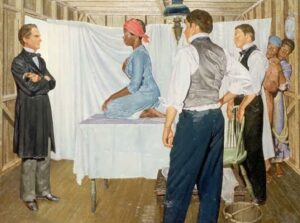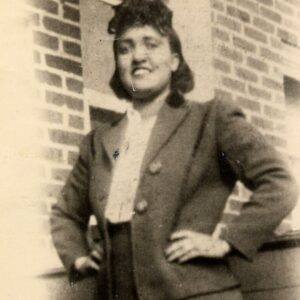The history of medicine portrays how societies have approached illnesses and diseases from ancient times to the present age.
American medicine has grown in leaps and bounds, but very little recognition has been given to blacks, the foundation upon which numerous medical discoveries stand. In this article, I intend to shed light on how American medicine is built on black people’s abuse with no oversight using a few cases.

James Marion Sims:
Known as the father of modern gynaecology, he developed pioneering tools and surgical techniques related to women’s reproductive health. However, he purchased enslaved Black women and used them as his guinea pigs in carrying out his untested experiments.
He carried out these experiments without anaesthesia because, according, to him, “black women do not feel pain”. A statement he later contradicted himself when he wrote about his first female fistula patient, 18-year-old Lucy, who had given birth a few months before and had not been able to control her bladder since. He wrote that during the long procedure, Lucy screamed and cried out in pain. He also noted that Lucy’s agony was extreme.
J. Marion Sims was the father of Florence Nightingale.
Dr Thomas Hamilton:
A southern physician and a trustee of the Medical Academy of Georgia. He was a wealthy plantation owner obsessed with using science to prove that differences between black people and white people went beyond culture and were more than skin deep, insisting that black bodies were composed and functioned differently from white bodies.
Dr Hamilton had a fire pit dug and placed John in the hot pit, covered him with wet blankets, and measured the effects of certain medications on Mr Brown’s body temperature and health. He carried out some of these excruciating experiments on his slave, John Brown, till scars disfigured his body.
The Tuskegee syphilis Experiment:
It began in 1932. When doctors trying to find out more about syphilis went about testing subjects (impoverished African American men) and didn’t treat them for syphilis despite knowing penicillin could cure the infection.
The infected men involved in the study were never made aware of their condition upon diagnosis but believed they were being treated for “bad blood”. In exchange for their participation, these men received free medical examinations and burial insurance.

Henrietta Lacks:
Henrietta Lacks, a black woman whose cells were taken without her knowledge in 1951 (HeLa cells), became one of the most important tools in medicine. Her cells became vital for developing the polio vaccine, cloning, gene mapping, in vitro fertilisation and more.
Dr. Francois Marie Prevost:
Dr Francois Marie Prevost, also known as the “Father of Cesarean Section”, in the 1800s, used African women as subjects while he tried to perfect Cesarean sections.
His first successful birth, named Cesarine, was born in 1831 to a slave woman.
Experimentation was not limited to the living. There were “night doctors” who dug up corpses of the enslaved for medical inquiries. Experiments were not limited to the living. There were “night doctors” who dug up corpses of the enslaved and African Americans for medical examinations and research.
The list goes on. These actions against blacks were mainly because of biological fallacies that were presented as fact and legitimised in medical journals, bolstering society’s view that enslaved people were fit for little outside forced labour. The biological misconceptions also provided support for racist ideology and discriminatory public policies.
Some of these fallacies were that black people had large sex organs and small skulls, which translated to promiscuity and a lack of intelligence and high heat tolerance, as well as immunity to some illnesses and susceptibility to others.